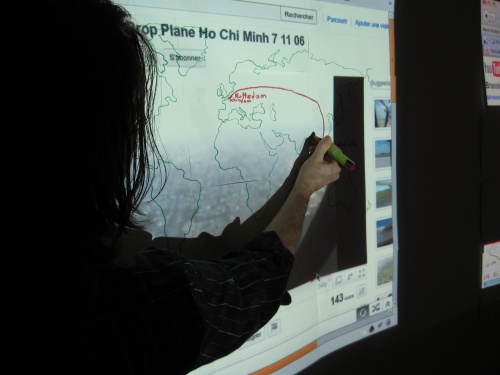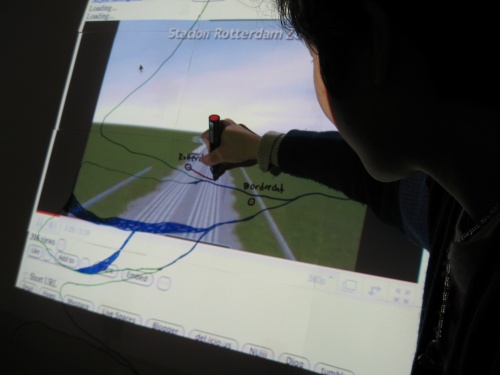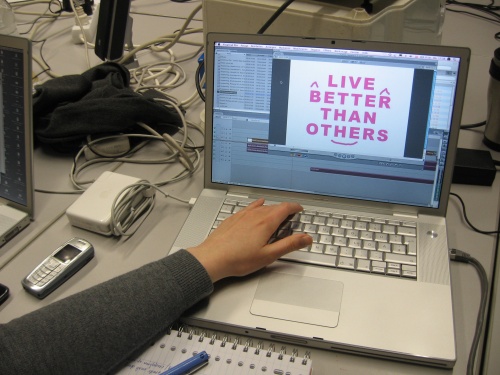Workshop Description: Difference between revisions
No edit summary |
No edit summary |
||
| (4 intermediate revisions by the same user not shown) | |||
| Line 1: | Line 1: | ||
A hypergeography is a | A hypergeography is a geography that links one place to another, either in the same region or to another part of the world, becoming connected together through a network of associations and relations. The starting point is localized media-production in Rotterdam, specifically geo-tagged videos found on YouTube, and how they are might be connected to the Rotterdam or might link or lead us to other places in the world. Using this as original working material, other types of sniffing and snooping of personal and public digital information can be brought into the mix. The media that is produced might therefore be directly related to place, it might trace back to a place that has an original relation or might be the starting point of a journey to another part of the world. In this case we are looking at the relations of media to location, media to author, individual to city, localities to the global network and multiple viewpoints or ways of telling a story. | ||
[[File: | [[File:Amy fabian4.JPG|500 px|]] [[File:IMG 4660.JPG|500 px|]] | ||
[[File:Betterthanothers.JPG|500 px|]] [[File:Betterthanothers2.JPG|500 px|]] | |||
Latest revision as of 23:36, 10 February 2011
A hypergeography is a geography that links one place to another, either in the same region or to another part of the world, becoming connected together through a network of associations and relations. The starting point is localized media-production in Rotterdam, specifically geo-tagged videos found on YouTube, and how they are might be connected to the Rotterdam or might link or lead us to other places in the world. Using this as original working material, other types of sniffing and snooping of personal and public digital information can be brought into the mix. The media that is produced might therefore be directly related to place, it might trace back to a place that has an original relation or might be the starting point of a journey to another part of the world. In this case we are looking at the relations of media to location, media to author, individual to city, localities to the global network and multiple viewpoints or ways of telling a story.
Artistic examples:
Flat Earth: Flat Earth is a desktop documentary, which takes the viewer on a seven minute trip around the world so that we encounter a series of fragments taken from real peoples' blogs. These fragments are knitted together to form a kind of story or singular narrative.
A Short film about War: A Short film about War is a narrative documentary artwork made entirely from information found on the worldwide web. In ten minutes this two screen gallery installation takes viewers around the world to a variety of war zones as seen through the collective eyes of the online photo sharing community Flickr, and as witnessed by a variety of existing military and civilian bloggers.
Buscando al Sr. Goodbar : Working in the paradigm of artist as ethnographer, Michelle Teran tracks internet DIY videomakers from the YouTube to their actual locations in Murcia, Spain.Her internet research made her familiar with locals of the area, and resulted in a bus tour during which the artist and audience revisited the locations of the original videos and sometimes even met up with their makers to enjoy re-enactments of the original performances. During the journey, the artist acted as Google Earth Vj, playing videos within their longitude and latitude coordinates while also reflecting the itinerary of the bus in the mapping service. By entering the most personal private world of the real, the project shows that locative media is not about physical location: it’s about intimacy. The project collides the most personal with the most public, and reveals the localities within the global net.




